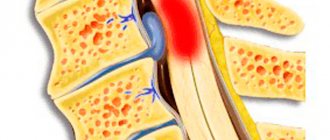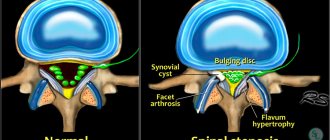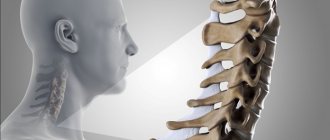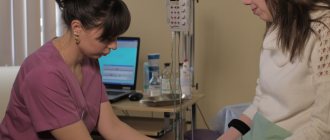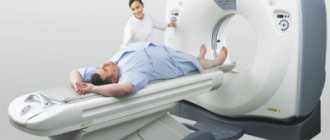The sensation of shooting pain between the ribs on the side will cause concern in any person. The first thing that comes under suspicion is the heart. But a disease such as intercostal neuralgia has a similar localization. To correctly diagnose pathology, it is important to know its causes and symptoms. What is included in the complex of treatment and prevention, read on.
What is intercostal neuralgia
Intercostal neuralgia (scientifically known as thoracalgia) is a pathology in which the roots or the entire length of the nerves located between the ribs are compressed and irritated. A person experiences severe chest pain. Very often, patients think that this pain is cardiac, since the discomfort is felt specifically in the heart area.
Middle-aged and elderly people suffer from the disease more often due to degenerative changes in the body, affecting nerve fibers. Also, tumors and inflammation of peripheral nerve trunks contribute to the manifestations of intercostal neuralgia. Women during pregnancy may also experience characteristic symptoms. This is caused by the expansion of the chest and abdominal muscles.
Factors in the development of pathology are:
- Injuries to the spine, ribs.
- Pinched nerves.
- Atherosclerosis and hypertension.
- Spinal diseases (osteochondrosis, scoliosis, hernias, disc protrusions, arthritis, osteoporosis, ankylosing spondylitis, tumors in the thoracic region).
- Diseases of the gastrointestinal tract (pancreatitis, ulcers).
- Lack of minerals and vitamins in the diet.
- Frequent stress.
- Local hypothermia.
- Diabetes.
- Prolonged and severe cough.
- Inflammation or excessive tension in the back muscles.
- Poisoning by poisons, drugs or microbial toxins.
- Injury to nerves located in the thoracic region.
Congenital malformations and spinal injuries, weak immunity, diseases of the cardiovascular system and bad habits create the preconditions for the development of intercostal neuralgia.
In the vast majority of cases, the disease occurs as a result of irritation or pinching of the nerve by the intercostal muscles.
In this state, a large number of impulses arrive at the nerve endings, a lack of oxygen appears, and as a result, severe pain.
Causes of pinched intercostal nerve
The main cause of pinching of the intercostal nerve is a violation of the anatomical configuration, consisting of vertebral bodies, costal arches, joints connecting them and intervertebral cartilaginous discs separating them. Less commonly, pathology develops against the background of damage to muscle fibers, ligaments and tendons.
Degenerative dystrophic lesions of the cartilage tissue of the intervertebral discs are the leading cause of the development of intercostal neuralgia. The disease often occurs at the second stage of osteochondrosis, when the fibrous ring of the disc becomes dehydrated, and the internal nucleus pulposus loses its ability to maintain the physiological norm and height of the disc. When the disc subsides, individual planes of the vertebrae converge or come together. They begin to exert compressive pressure on the radicular nerves, the branches of which are the intercostal ones.
Long-term osteochondrosis leads to the fact that the intervertebral discs begin to extend beyond the bodies of the separated vertebrae. At the same time, they have a negative effect on surrounding tissues, compress them, and cause inflammation. When a herniated disc prolapses, irritation of surrounding tissues and an acute inflammatory reaction occur.
In addition to osteochondrosis and its complications, pinching of the intercostal nerve can occur when exposed to the following negative factors:
- dysfunction of the joints with which the costal arches are attached to the lateral surfaces of the vertebrae;
- destruction of the intervertebral joints, as a result of which the stability of the position of the vertebral bodies is disrupted;
- rotation, torsion and other types of displacement of vertebral bodies and intervertebral discs;
- reflex tension of the muscles of the back frame, leading to tension in the intercostal muscles;
- poor posture (round or stooped back), curvature of the spine such as scoliosis, kyphosis, lordosis, etc.);
- growing tumors inside the chest - put pressure on the structures of the spinal column and costal arches;
- inflammatory processes in the lungs, pleural membranes;
- infectious damage to the tissues of the spinal column of the dural membranes of the spinal cord.
When conducting a primary diagnosis, an experienced doctor finds the reasons that contributed to the development of pathology in the patient. All possible risk factors are excluded. Most often, pinched intercostal nerve occurs in people who:
- lead a sedentary lifestyle without sufficient physical exertion on the muscular frame of the back;
- are overweight;
- eat refined foods;
- smoke and drink alcoholic beverages;
- at work they are engaged in heavy physical labor involving lifting and carrying heavy objects;
- They do not pay attention to the proper organization of their sleeping and working space.
The pathology can develop against the background of gastritis and pancreatitis, biliary dyskinesia, weakness of the diaphragm muscles, and diabetes mellitus. In approximately half of patients, compression of the intervertebral nerves is associated with excessive muscle tension that occurs in response to traumatic stress factors. In another 10% of cases, pinching is a consequence of traumatic effects (bruises, fractures and cracks of the costal arches, displacement of the vertebrae, subluxations of joints, sprains and tears of ligament and tendon fibers).
It is important to exclude the possibility of developing herpes zoster due to a herpes infection. This disease is clinically similar to a pinched intercostal nerve, but its treatment is completely different.
Symptoms and diagnosis of intercostal neuralgia
The disease can be suspected first of all if:
- Acute pain.
- Burning sensation.
- Tingling.
- Back muscle tension.
The pain can be paroxysmal, excruciating, resemble pain in the heart, and radiate to the shoulder blade or epigastric region. It gets worse when coughing, sneezing or turning the body. A person is forced to take this body position in order to alleviate his condition. The duration of the condition is 4-7 days.
Some areas of the skin in the chest area may lose sensitivity or, on the contrary, be painful when touched.
Additional symptoms of intercostal neuralgia:
- Heavy sweating.
- Sharp fluctuations in blood pressure.
- Pain in the lumbar spine.
The main thing in diagnosing intercostal neuralgia is to differentiate its symptoms from life-threatening heart pain. Main differences:
- Heart pain is relieved with Nitroglycerin tablets.
- The pain in the heart radiates to the left shoulder or arm, and the person feels an arrhythmia.
- In case of heart disease, the pain is short-term, the sensation does not change with a deep breath.
Pain due to neuralgia intensifies when palpating the intercostal spaces, while bending or turning the body. Nitroglycerin does not help, but warmth and painkillers bring relief.
In some cases, it is important to exclude pneumonia, pleurisy and stomach ulcers.
The doctor makes a diagnosis based on the patient’s complaints and careful palpation of the ribs with spaces between them. In difficult cases, examination is indicated, for example:
- Computed tomography or MRI of the entire spinal column.
- X-ray of the spine and chest organs.
- Ultrasound of the heart and electrocardiogram for complaints of pain on the left (to rule out heart disease).
- Electroneurography for suspected nerve injury.
- Gastroscopy to exclude gastrointestinal pathologies.
Additionally, a general blood and urine test is prescribed to have an idea of the patient’s health status, the presence/absence of an infectious process, and kidney function.
Symptoms of pinched intercostal nerve in the thoracic region
The first clinical symptom of a pinched intercostal nerve is pain. It is sharp or burning in nature. Occurs immediately after traumatic exposure. It can be triggered by an awkward or sudden movement, or prolonged exposure to a static position.
Other symptoms of intercostal nerve entrapment include:
- stiffness when making movements, and a person may complain that he cannot turn the body in one direction or another or bend over;
- difficulty taking a deep or sharp breath - this causes increased pain;
- a feeling of tightness in the spinal column, sometimes accompanied by crunching or clicking sounds when moving;
- inflammation of the radicular nerves, which causes pain to spread along their course;
- numbness of individual areas along the costal arch;
- paresthesia, sensation of crawling on the skin;
- skin sensitivity decreases, pallor appears at the site of compression;
- signs of damage to the blood vessels appear (the skin becomes dry to the touch, cold and pale).
An experienced neurologist or vertebrologist can identify the symptoms of a pinched intercostal nerve in the thoracic region. During the examination, he performs initial palpation and identifies the location of compression. Then, using special diagnostic tests, he identifies the cause of the lesion. As necessary, an X-ray of the thoracic spine, MRI, CT, fluorography of the lungs, ultrasound of the internal organs of the upper abdominal cavity, etc. are prescribed.
If the radicular nerve is seriously damaged, signs of autonomic dysfunction may appear. These include tachycardia, shortness of breath, reflex cough, a feeling of general anxiety, panic attacks, etc.
If treatment for a pinched intercostal nerve is not carried out in a timely manner, the person is in serious danger. When the respiratory muscles are paralyzed, breathing becomes difficult, and internal organs begin to experience severe oxygen starvation.
Pinched nerve
Causes
In our clinic, nerve entrapment is considered in the context of structural and functional disorders of the entire musculoskeletal system. Particular attention is paid to the spine, because This is where compression of the nerve roots is most often detected. The load on the back increases, the muscles spasm and put even more pressure on the pinched nerve. A kind of “vicious circle” arises, where one violation supports another.
Predisposing factors include:
- injuries, dislocations, fractures;
- sudden simultaneous load;
- congenital deformities of the spinal column;
- osteoarthritis with destruction of cartilage tissue;
- rachiocampsis.
The risk of nerve entrapment increases with excess weight, prolonged forced posture, intense physical activity, prolonged immobilization, pregnancy, and endocrine pathologies.
Symptoms
The clinical picture has specific features due to the location of the pinched nerve.
Complaints may be as follows:
- sharp, burning, acute pain with irradiation to neighboring areas;
- tension, soreness of surrounding muscles;
- limitation of limb mobility;
- swelling of surrounding tissues, tingling of the skin, muscle twitching.
Attempts to move or touch cause increased pain. The patient is forced to maintain the position in which the discomfort is least pronounced.
Diagnostics
The diagnosis of nerve entrapment is confirmed by various methods:
- electroneuromyography (examines the conductivity of the nerve trunk);
- electromyography (the work of innervated muscles is checked);
- functional diagnostics and stabilometry (localization of disorders is determined).
A comprehensive examination allows you to identify the root cause of the problem, determine what exactly caused the compression of the nerve root and identify associated disorders.
Treatment
Based on the results of functional diagnostics, a treatment plan is drawn up, aimed at the coordinated functioning of all body structures. This means that the doctor eliminates the pinched nerve, simultaneously sorting out the entire chain of pathobiomechanical disorders.
Helps release a pinched nerve:
- acupressure;
- manual therapy;
- physiotherapeutic procedures;
- Exercise therapy.
In case of severe pain, a course of medications is prescribed, recommendations are given regarding the regimen and loads.
An integrated approach leads to a rapid improvement in the condition - the nerve is freed from compressive factors, and its conductivity is restored. As a result, pain goes away, and mobility returns to the spine and limbs.
Causes of the disease
In general, all reasons can be divided into two groups. Namely:
- Mechanical damage.
- Degenerative processes.
In the first case, it is enough to turn or bend over unsuccessfully to encounter manifestations of pinching. Also, sometimes pathology is provoked by excessive physical exertion and lack of dosage of work and rest. Degenerative processes include scoliosis, osteochondrosis and other diseases. They lead to disturbances in the structure of the vertebrae and the cartilage between them, accompanied by severe pain and a host of other manifestations.
Physical exercise
Symptoms of a pinched nerve in the thoracic spine can easily arise if, for example, you take on a load that is too heavy for you. You may experience pain if you lift a load too quickly or if you lift it incorrectly and put strain on your back.
Osteochondrosis
It is a dangerous disease, the manifestation of which is often a pinched nerve in the thoracic spine. The pathology causes the cartilage tissue between the vertebrae to wear out and become thinner, which significantly impairs shock absorption. Untimely treated osteochondrosis can lead not only to pinched nerves, but also to the occurrence of intervertebral hernia.
Sensitivity of nerves
The sensitivity of the nerves tends to change over time, and the position of the spine changes in the same way. There are cases when, with age, people experience various types of curvature of the spinal column, which provokes pinched nerves. To eliminate this condition, you will need to stop the displacement and strengthen your back muscles.



